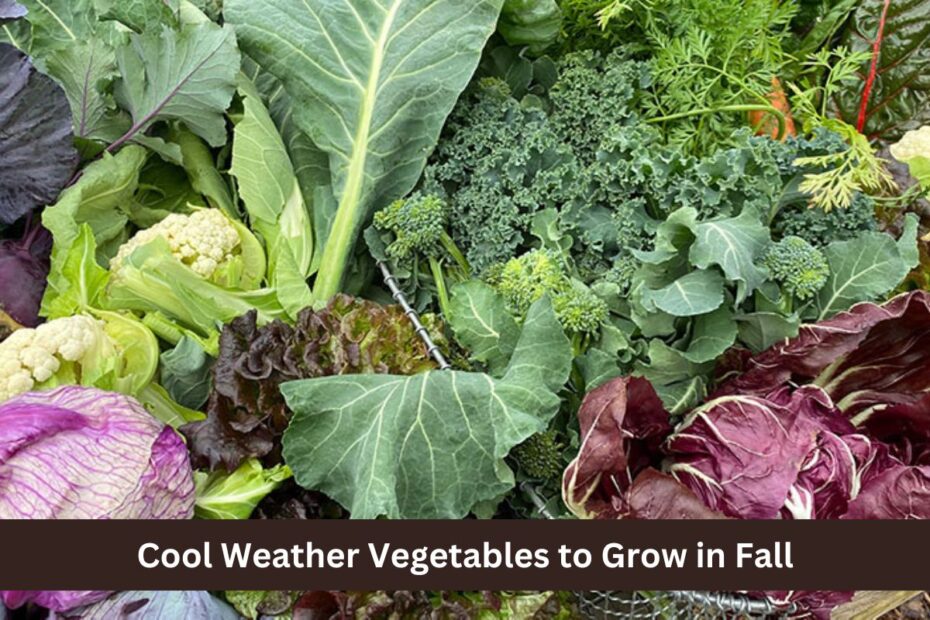There is a special chance to grow a wide range of cool-weather veggies that do well in the mild weather of autumn gardening. When summer crops start to go bad, gardeners can put new seeds in the cooler weather to get more from their crops.
This article talks about the best cool-weather veggies to grow in the autumn, focussing on their benefits, planting tips, and care needs.
Benefits of Growing Cool-Weather Vegetables
Cool-weather veggies do especially well in autumn gardening for a number of reasons:
Flavor Enhancement: Many cool-season veggies, like kale and carrots, taste better when they are exposed to cooler temperatures and light frosts. When it’s cold outside, the sugar in these veggies can rise, making them sweeter and more flavourful.
Reduced Pest Pressure: As the weather gets cooler, many pests that like it warmer start to disappear. This means that you’ll have fewer problems with infestations and a better time farming.
Extended Harvest Season: By planting vegetables that do well in cool weather, gardeners can enjoy fresh food well into the autumn and even into the winter, based on where they live.
Also see :- Ask the Experts: Deutzia Shrub Care
Ideal Cool-Weather Vegetables to Grow
1. Leafy Greens
Spinach: Spinach grows quickly and does best when it’s cooler outside. You can plant it right in the yard in late summer to harvest in the autumn; it usually takes 50 to 70 days to grow.
Kale: Kale is known for being tough; it can even grow better in cold weather because it makes the leaves sweeter. It’s ready to be picked between 55 and 90 days after planting, and you can do it all winter long.
2. Brassicas
Broccoli: This healthy food grows best in cooler weather, and you can plant it in late summer to get a harvest in the autumn. Broccoli usually grows up in 60 to 80 days, and it’s best to pick it before it gets too cold.
Cauliflower: In the same way that broccoli does, cauliflower grows best when it is cool outside. Since it takes longer to grow—around 55 to 100 days—starting it indoors before moving it outside can be helpful.
3. Root Vegetables
Carrots: Carrots are great to plant in the autumn because you can pick them until the ground freezes. They can be planted right in the yard and will be ready in 60 to 80 days.
Beets: You can plant beets in late summer, and they do best when it’s cooler outside. They’re ready to be picked in 55 to 65 days, and they can handle light frosts.
4. Other Vegetables
Radishes: One of the fastest crops to grow is the radishes, which are usually ready to be picked in 25 to 30 days. They are great for quick fall crops because they can be planted right in the ground.
Cabbage: Another veggie that can be planted in the autumn and still grow well is cabbage. It usually grows up in 60 to 85 days, and you can store it for a few months after you gather it.
Planting and Care Tips
Timing
To grow veggies that do well in cool weather, you need to know when the first frost will happen in your area. With this knowledge, you can choose the best time to plant. For most cool-weather crops, planting should happen between late summer and early autumn. This gives them time to grow before the cold.
Soil Preparation
To get nutrients back into the soil that may have been lost over the summer, add compost or other organic waste before planting. This will give your autumn crops a healthy place to grow.
Watering and Maintenance
Vegetables that grow in cool weather usually need steady moisture, especially when they are sprouting. Make sure the earth stays evenly wet, but not too wet. As the weather gets cooler, you might need to change how often you water.
Conclusion
Growing cool-weather veggies in the autumn is a fun and rewarding activity that not only makes gardening last longer but also makes the food taste better. Gardeners can enjoy a plentiful harvest well into the winter if they choose the right plants and follow the right ways to plant and care for them. Take pleasure in the beauty of autumn gardening and enjoy fresh, tasty vegetables grown in your own yard.
